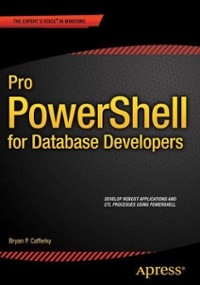Question
JAVA - Please complete the below method Ascii2Integer() USING RECURSION: I HAVE ALSO INCLUDED THE LINKEDBTREE CLASS /* */ import binarytree.*; /** A program that
JAVA - Please complete the below method Ascii2Integer() USING RECURSION: I HAVE ALSO INCLUDED THE LINKEDBTREE CLASS
/*
*/
import binarytree.*;
/** A program that tests the ascii2int() method. */ public class Ascii2Integer { /** A method that converts a binary tree of integer strings into a binary tree of integers. This method assumes that all of the strings in the input tree contain properly formatted integers. */ public static LinkedBTree
}
// A simple test case for ascii2int(). public static void main(String[] args) { BTree
BTree
System.out.println( btree1 ); BTree2dot.btree2dot(btree1, "btree1"); BTree2png.btree2png("btree1");
System.out.println( btree2 ); BTree2dot.btree2dot(btree2, "btree2"); BTree2png.btree2png("btree2"); } }
package binarytree;
/**
This class defines a binary tree data structure
as an object that has a reference to a binary
tree node.
This class gives us a well defined empty binary tree
that is not represented by a null value. The empty
tree is internally denoted by a null reference, but
that reference is hidden inside of a {@code LinkedBTree}
object, so the null reference is not part of the public
interface. The internal reference to a node acts as a
"tag" (in a "tagged union") to distinguish between the
two cases of the binary tree algebraic data type.
See
https://en.wikipedia.org/wiki/Tagged_union
Compared to the {@link BTreeLinked} implementation of the
{@link BTree} interface, this implementation "has a" node,
whereas {@link BTreeLinked} "is a" node.
The {@link binarytree.LinkedBTree.BTreeNode} data structure
is defines as a private, nested class inside of this
{@code LinkedBTree} class.
*/
public class LinkedBTree
{
private BTreeNode
/**
Construct an empty binary tree.
*/
public LinkedBTree()
{
btreeNode = null;
}
/**
Construct a leaf node.
Notice that if this constructor didn't exist, you could
still construct a leaf node, it would just be cumbersome.
For example,
{@code BTree leaf = new LinkedBTree<>("a", new LinkedBTree<>(), new LinkedBTree<>());
}
So this is really a "convenience" constructor. It doesn't
need to be defined, but it sure is convenient for it to be
here.
@param element reference to the data object to store in this node
@throws NullPointerException if {@code element} is {@code null}
*/
public LinkedBTree(T element)
{
if (null == element)
throw new NullPointerException("root element must not be null");
btreeNode = new BTreeNode
}
/**
Construct a BTree with the given binary trees
as its left and right branches.
@param element reference to the data object to store in this node
@param left left branch tree for this node
@param right right branch tree for this node
@throws NullPointerException if {@code element} is {@code null}
@throws NullPointerException if {@code left} is {@code null}
@throws NullPointerException if {@code right} is {@code null}
*/
public LinkedBTree(T element, LinkedBTree
{
if (null == element)
throw new NullPointerException("root element must not be null");
if (null == left)
throw new NullPointerException("left branch must not be null");
if (null == right)
throw new NullPointerException("right branch must not be null");
// We need to "unwrap" the nodes from the left and right branches.
btreeNode = new BTreeNode
}
/**
This is a static factory method.
Convert an arbitrary {@link BTree} to a {@code LinkedBTree}.
@param
@param btree A {@link BTree} of any type
@return a {@code LinkedBTree} version of the input tree
@throws NullPointerException if {@code btree} is {@code null}
*/
public static
{
if (null == btree)
throw new NullPointerException("btree must not be null");
if ( btree.isEmpty() )
{
return new LinkedBTree
}
else if ( btree.isLeaf() ) // need this case for FullBTree
{
return new LinkedBTree
new LinkedBTree
new LinkedBTree
}
else
{
return new LinkedBTree
convert(btree.left()),
convert(btree.right()));
}
}
// Implement the four methods of the BTree
@Override
public boolean isEmpty()
{
return null == btreeNode;
}
@Override
public T root()
{
if (null == btreeNode)
throw new java.util.NoSuchElementException("empty BTree");
return btreeNode.element;
}
@Override
public LinkedBTree
{
if (null == btreeNode)
throw new java.util.NoSuchElementException("empty BTree");
// We need to "wrap" the node for the
// left branch in a BTree object.
LinkedBTree
temp.btreeNode = this.btreeNode.left;
return temp;
}
@Override
public LinkedBTree
{
if (null == btreeNode)
throw new java.util.NoSuchElementException("empty BTree");
// We need to "wrap" the node for the
// right branch in a BTree object.
LinkedBTree
temp.btreeNode = this.btreeNode.right;
return temp;
}
// A private nested class definition.
private class BTreeNode
{
public T element;
public BTreeNode
public BTreeNode
public BTreeNode(T data)
{
this(data, null, null);
}
public BTreeNode(T element, BTreeNode
{
this.element = element;
this.left = left;
this.right = right;
}
public String toString()
{
if (null == left && null == right)
{
return element.toString();
}
else
{
String result = "(" + element;
result += " ";
result += (null == left) ? "()" : left; // recursion
result += " ";
result += (null == right) ? "()" : right; // recursion
result += ")";
return result;
}
}
}//BTreeNode
}
Step by Step Solution
There are 3 Steps involved in it
Step: 1

Get Instant Access to Expert-Tailored Solutions
See step-by-step solutions with expert insights and AI powered tools for academic success
Step: 2

Step: 3

Ace Your Homework with AI
Get the answers you need in no time with our AI-driven, step-by-step assistance
Get Started


